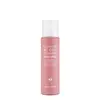What's inside
What's inside
 Key Ingredients
Key Ingredients

 Benefits
Benefits

 Concerns
Concerns

 Ingredients Side-by-side
Ingredients Side-by-side

Water
Skin ConditioningButylene Glycol
HumectantAlcohol
AntimicrobialGlycerin
HumectantDipropylene Glycol
HumectantGlycereth-26
HumectantTrehalose
HumectantAllantoin
Skin Conditioning1,2-Hexanediol
Skin ConditioningGlyceryl Glucoside
HumectantCalamine
AbsorbentCaprylyl Glycol
EmollientAmmonium Acryloyldimethyltaurate/Vp Copolymer
Acrylates/C10-30 Alkyl Acrylate Crosspolymer
Emulsion StabilisingPolyglyceryl-10 Laurate
Skin ConditioningXanthan Gum
EmulsifyingIllicium Verum Fruit Extract
PerfumingRubus Idaeus Fruit Extract
AstringentPolyglyceryl-4 Laurate
EmulsifyingTromethamine
BufferingCaprylyl/Capryl Glucoside
CleansingLavandula Angustifolia Oil
MaskingLinalool
PerfumingT-Butyl Alcohol
PerfumingOlea Europaea Fruit Oil
MaskingMelaleuca Alternifolia Leaf Oil
AntioxidantSorghum Bicolor Leaf/Stem Extract
Skin ConditioningAspergillus Ferment
Skin ConditioningWater, Butylene Glycol, Alcohol, Glycerin, Dipropylene Glycol, Glycereth-26, Trehalose, Allantoin, 1,2-Hexanediol, Glyceryl Glucoside, Calamine, Caprylyl Glycol, Ammonium Acryloyldimethyltaurate/Vp Copolymer, Acrylates/C10-30 Alkyl Acrylate Crosspolymer, Polyglyceryl-10 Laurate, Xanthan Gum, Illicium Verum Fruit Extract, Rubus Idaeus Fruit Extract, Polyglyceryl-4 Laurate, Tromethamine, Caprylyl/Capryl Glucoside, Lavandula Angustifolia Oil, Linalool, T-Butyl Alcohol, Olea Europaea Fruit Oil, Melaleuca Alternifolia Leaf Oil, Sorghum Bicolor Leaf/Stem Extract, Aspergillus Ferment
Water
Skin ConditioningPropanediol
SolventDiheptyl Succinate
EmollientGlycerin
HumectantAmmonium Acryloyldimethyltaurate/Vp Copolymer
Salicylic Acid
MaskingPhenoxyethanol
PreservativeCaprylyl Glycol
EmollientTromethamine
BufferingEthylhexylglycerin
Skin ConditioningTriethyl Citrate
MaskingBenzoic Acid
MaskingAllantoin
Skin ConditioningCamellia Sinensis Seed Oil
HumectantBisabolol
MaskingPunica Granatum Seed Oil
EmollientVitis Vinifera Seed Oil
EmollientCentella Asiatica Extract
CleansingDiglucosyl Gallic Acid
T-Butyl Alcohol
Perfuming1,2-Hexanediol
Skin ConditioningCapryloyl Glycerin/Sebacic Acid Copolymer
Skin ConditioningGlycyrrhiza Glabra Root Extract
BleachingLilium Candidum Bulb Extract
Skin ConditioningCamellia Sinensis Leaf Extract
AntimicrobialWater, Propanediol, Diheptyl Succinate, Glycerin, Ammonium Acryloyldimethyltaurate/Vp Copolymer, Salicylic Acid, Phenoxyethanol, Caprylyl Glycol, Tromethamine, Ethylhexylglycerin, Triethyl Citrate, Benzoic Acid, Allantoin, Camellia Sinensis Seed Oil, Bisabolol, Punica Granatum Seed Oil, Vitis Vinifera Seed Oil, Centella Asiatica Extract, Diglucosyl Gallic Acid, T-Butyl Alcohol, 1,2-Hexanediol, Capryloyl Glycerin/Sebacic Acid Copolymer, Glycyrrhiza Glabra Root Extract, Lilium Candidum Bulb Extract, Camellia Sinensis Leaf Extract
 Reviews
Reviews

Ingredients Explained
These ingredients are found in both products.
Ingredients higher up in an ingredient list are typically present in a larger amount.
1,2-Hexanediol is a synthetic liquid and another multi-functional powerhouse.
It is a:
- Humectant, drawing moisture into the skin
- Emollient, helping to soften skin
- Solvent, dispersing and stabilizing formulas
- Preservative booster, enhancing the antimicrobial activity of other preservatives
Allantoin is a soothing ingredient known for its protective and moisturizingg properties. Because of this, it is often added to products with strong active ingredients.
Studies show higher concentrations of this ingredient can promote wound healing.
Though it can be derived from the comfrey plant, allantoin is produced synthetically for cosmetic products to ensure purity.
Learn more about AllantoinAmmonium Acryloyldimethyltaurate/Vp Copolymer (let's call it AAVC for short) is a synthetically created polymer. It's used as a film-forming agent and used to thicken the consistency of products.
AAVC is able to increase the consistency and viscosity of products due to its large molecule size. It also prevents ingredients from separating.
Caprylyl Glycol is a humectant and emollient, meaning it attracts and preserves moisture.
It is a common ingredient in many products, especially those designed to hydrate skin. The primary benefits are retaining moisture, skin softening, and promoting a healthy skin barrier.
Though Caprylyl Glycol is an alcohol derived from fatty acids, it is not the kind that can dry out skin.
This ingredient is also used as a preservative to extend the life of products. It has slight antimicrobial properties.
Learn more about Caprylyl GlycolGlycerin is already naturally found in your skin. It helps moisturize and protect your skin.
A study from 2016 found glycerin to be more effective as a humectant than AHAs and hyaluronic acid.
As a humectant, it helps the skin stay hydrated by pulling moisture to your skin. The low molecular weight of glycerin allows it to pull moisture into the deeper layers of your skin.
Hydrated skin improves your skin barrier; Your skin barrier helps protect against irritants and bacteria.
Glycerin has also been found to have antimicrobial and antiviral properties. Due to these properties, glycerin is often used in wound and burn treatments.
In cosmetics, glycerin is usually derived from plants such as soybean or palm. However, it can also be sourced from animals, such as tallow or animal fat.
This ingredient is organic, colorless, odorless, and non-toxic.
Glycerin is the name for this ingredient in American English. British English uses Glycerol/Glycerine.
Learn more about GlycerinT-Butyl Alcohol it is most commonly used as a solvent.
At room temperature, T-Butyl Alcohol melts and has a similar smell to camphor.
This ingredient is derived from isobutane. It is the simplest form of a tertiary alcohol. Due to its chemical structure, it is more resistant to oxidation.
Some sources online claim T-Butyl Alcohol is a fatty alcohol. However, it is not considered one due to its chemical structure.
Learn more about T-Butyl AlcoholTromethamine helps balance the pH and improve the texture of a product. It is synthetically created.
As an emulsifier, Tromethamine prevents oil and water ingredients from separating. This helps stabilize the product and elongate a product's shelf life. Tromethamine also makes a product thicker.
Tromethamine helps balance the pH level of a product. Normal pH level of skin is slightly acidic (~4.75-5.5). The acidity of our skin is maintained by our glands and skin biome. Being slightly acidic allows our skin to create an "acid mantle". This acid mantle is a thin barrier that protects our skin from bacteria and contaminants.
Oral Tromethanmine is an anti-inflammatory drug but plays the role of masking, adding fragrance, and/or balancing pH in skincare.
1,3-Propanediol, 2-amino-2-(hydroxymethyl)-
Learn more about TromethamineWater. It's the most common cosmetic ingredient of all. You'll usually see it at the top of ingredient lists, meaning that it makes up the largest part of the product.
So why is it so popular? Water most often acts as a solvent - this means that it helps dissolve other ingredients into the formulation.
You'll also recognize water as that liquid we all need to stay alive. If you see this, drink a glass of water. Stay hydrated!
Learn more about Water